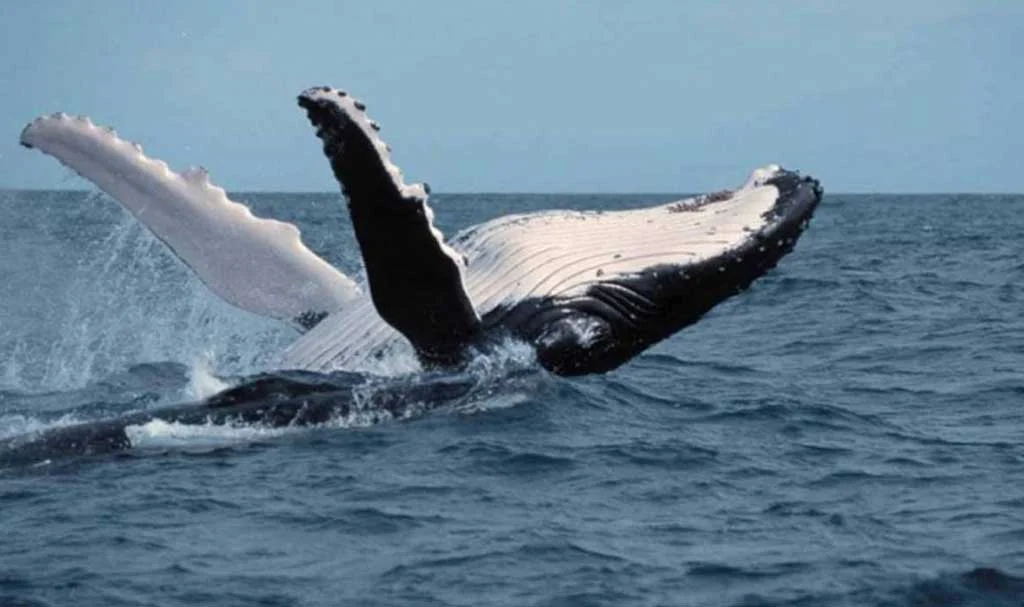
Insider's Guide: Galapagos Whale Watching Tips for Success | Travel Blog
Ever felt the rush of standing on a ship's deck, salt air in your hair, eyes scanning the endless ocean for that breathtaking sight? That thrill is what a Galapagos whale watching tour offers. But like any wild encounter, it's unpredictable.
The deep blue might remain just that - an empty canvas with no stroke of marine majesty to grace it. Or you could be lucky enough to witness a humpback breaching into sunlight or catch a pod of dolphins riding your wake.
'What makes this game of chance worth playing?' you ask. Well friends, stick around and I'll let you in on how choosing the right season can skyrocket your odds. We'll dive into why picking an itinerary known for its whale activity is crucial and why Darwin and Wolf Islands are 'whale hotspots'.
Get ready, because we're gearing up for an exciting journey. Buckle in and prepare yourself to explore the unknown with us. Learn to pick the best Galapagos tour for whale watching.
Table of content
Unpredictability of Galapagos Whale Watching
The allure of whale watching in the Galapagos Islands is intensified by its unpredictability. The Galapagos Islands, located a thousand kilometers off Ecuador's coast, offer an unparalleled opportunity to witness nature's grandeur.
A mix of anticipation and patience defines this experience. While you're on board your Galapagos yacht cruise or standing at an observation point, every splash might signal the presence of these majestic creatures. But why is it so unpredictable?
The Vagaries Of Nature And Migration Patterns
To begin with, whales are not residents but visitors to Galapagos waters; they migrate thousands of miles annually between their feeding grounds in cold waters and breeding grounds in warmer climes.
This grand journey means that timing is everything when it comes to catching sight of them. Typically speaking, July through November, coinciding with the cool season (also known as Garua), sees a surge in sightings due to nutrient-rich currents attracting marine life.
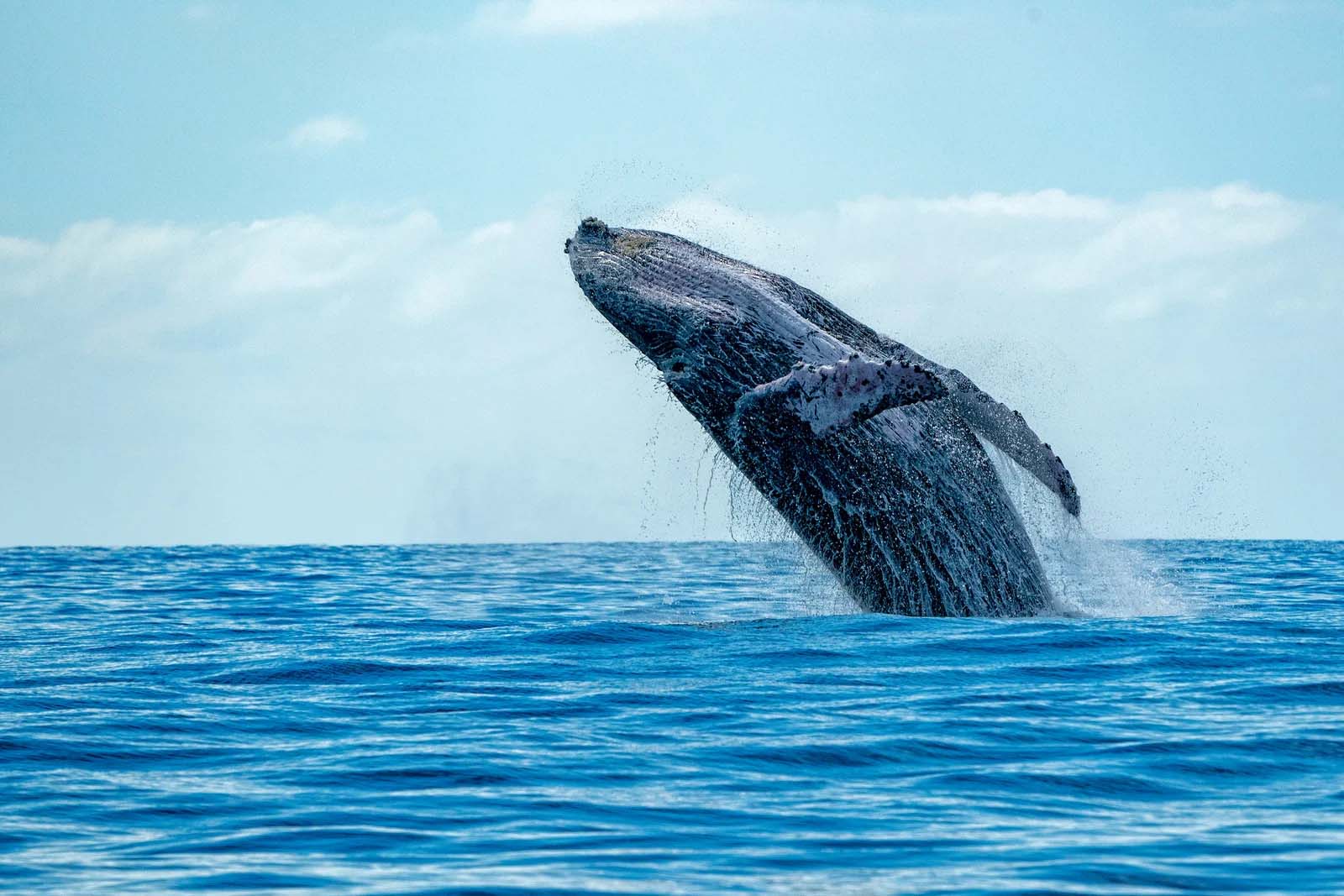
Different Species Show Up At Different Times
In addition to seasonal variability, different species show up at different times. For instance, the Blue Whales, Earth's largest animal, tend towards early summer arrivals while Humpbacks usually grace us later around August-September.
No matter what time you choose though there's no guarantee – such is their free-spirited lifestyle. One day may be full spectacle; breaching bodies and tail slaps, the next might be a no-show.
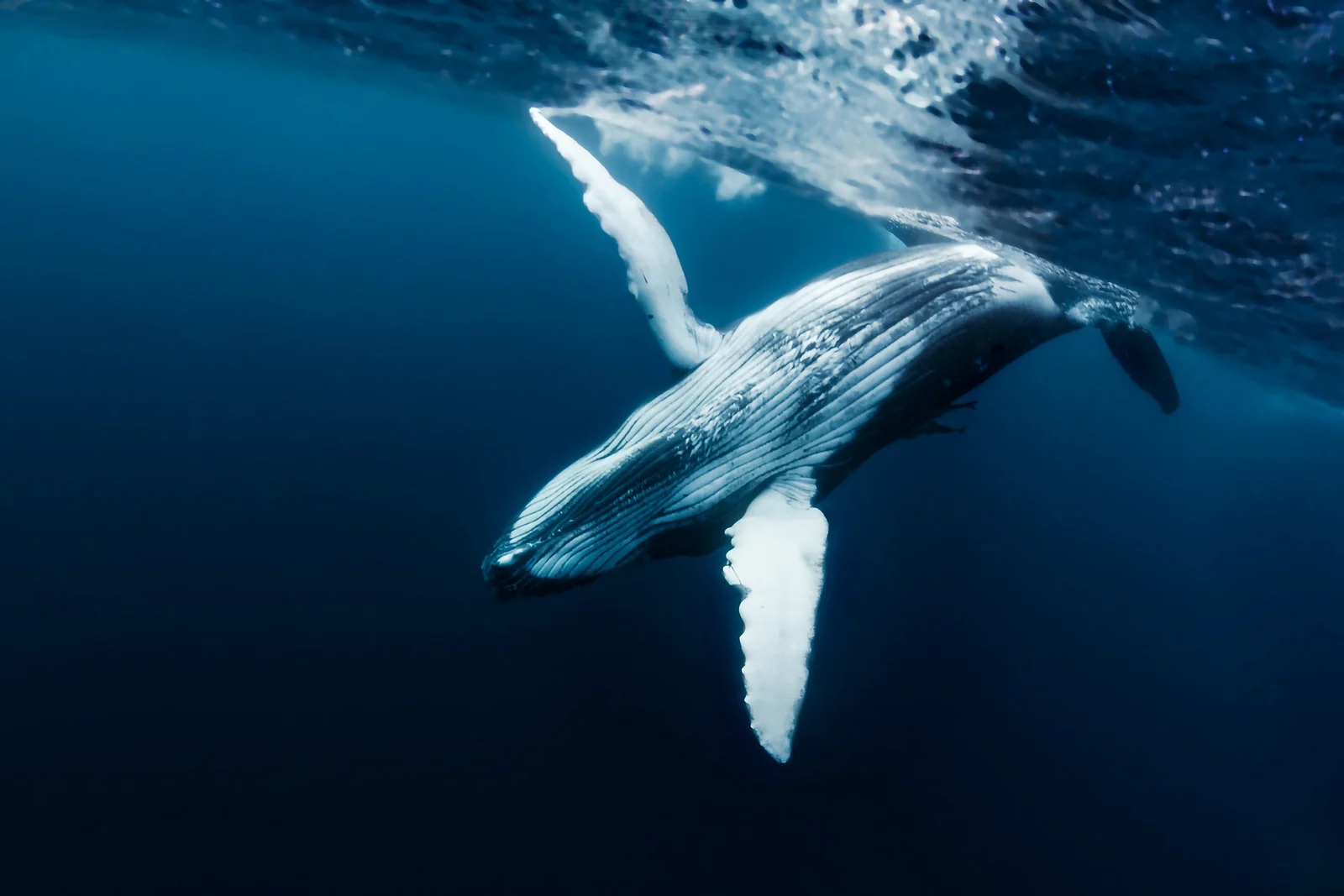
Whale Spotting Is Not An Exact Science
Moreover, spotting whales is not an exact science. Despite advancements in technology and our understanding of these marine mammals' behavior, their sightings can't be accurately predicted.
Sometimes they stay underwater for up to 90 minutes; other times they come up every few minutes. It's all part of what makes whale watching such an exciting adventure – you never know exactly when or where they will surface.
Key Takeaway:
Galapagos Whale Watching: A Blend of Anticipation and Unpredictability
Despite our best efforts, we can't always predict when these majestic creatures will show up. But that's what makes the experience so exciting. Each whale watching trip in Galapagos is a unique adventure filled with anticipation and surprise.
Maximizing Your Chances for a Successful Whale Watch
For a successful whale watch in the Galapagos, it's wise to plan ahead. You need to plan strategically.
The Importance of Whale Season in Galapagos
Planning your trip to the Galapagos should start with scheduling it for the right time of year. Just like migratory birds, whales have their own patterns too. Most whale species in the Galapagos Marine Reserve, including humpbacks and orcas, migrate through its waters from June to September - a period often referred to as 'whale season' - offering increased chances of sighting them.
This period is often referred to as 'whale season'. It's when the majority of these magnificent creatures migrate through the archipelago's waters, giving us humans more opportunities for sightings. So make sure you mark your calendars.
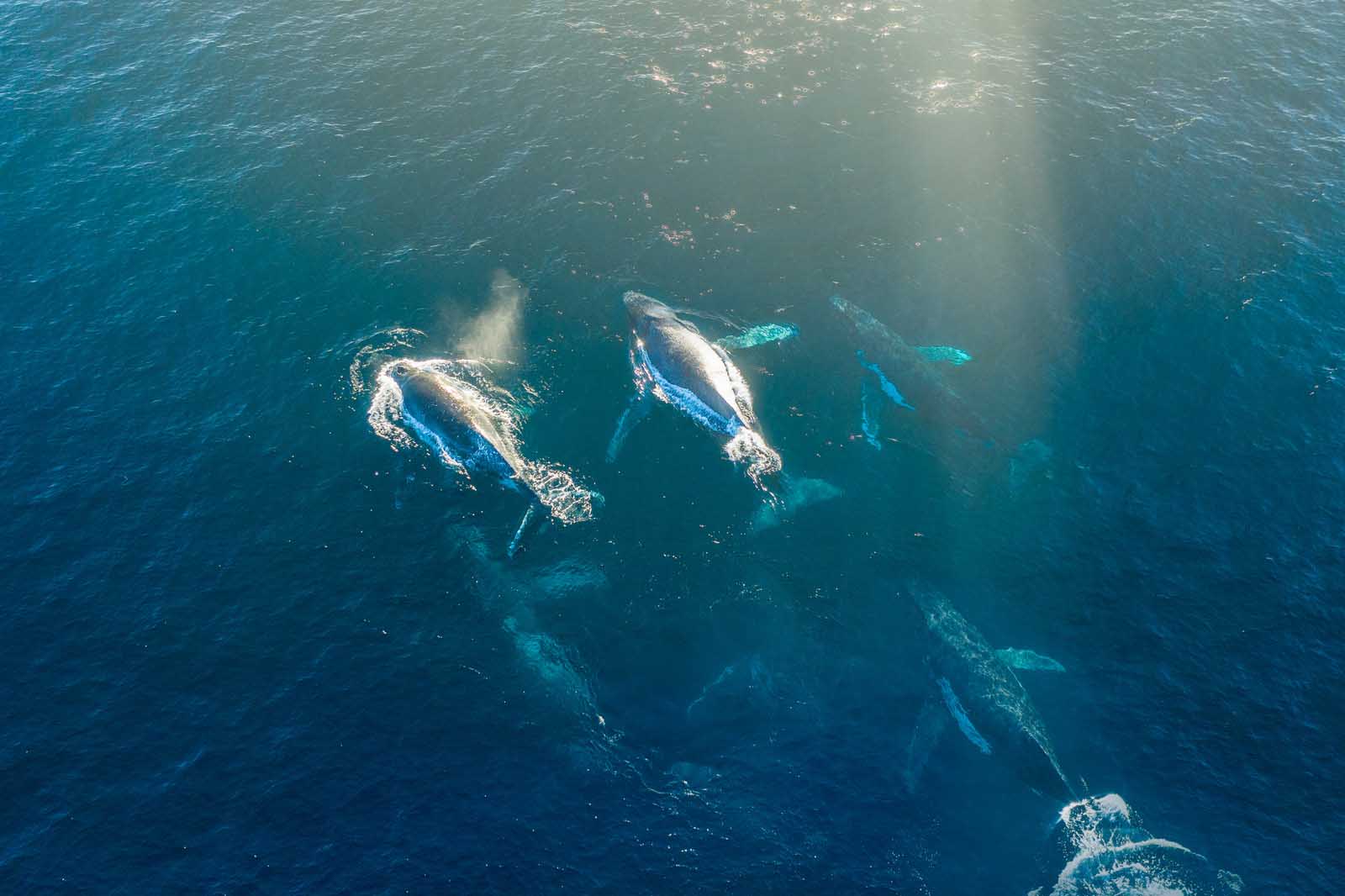
Choosing a Cruise Itinerary for Optimal Whale Sightings
You could be visiting during peak whale season but still miss out if you're not cruising around their hotspots. That’s why picking an expedition cruise itinerary that takes you along routes known for whale activity can give your chances a significant boost.
An ideal choice would be an itinerary that includes Fernandina Island - one of National Geographic’s top-rated areas for seeing marine life such as dolphins, sea lions...and yes – WHALES. The Bolivar channel between Isabela and Fernandina Islands specifically has earned quite a reputation among seasoned sailors due its high frequency of encounters with these majestic creatures.
But that's not all. To increase your chances even more, consider a cruise itinerary that also visits the far-flung Darwin and Wolf Islands. These distant isles are found in the north-western region of Galapagos Archipelago and boast nutrient-rich waters that draw a multitude of aquatic creatures - including whales.
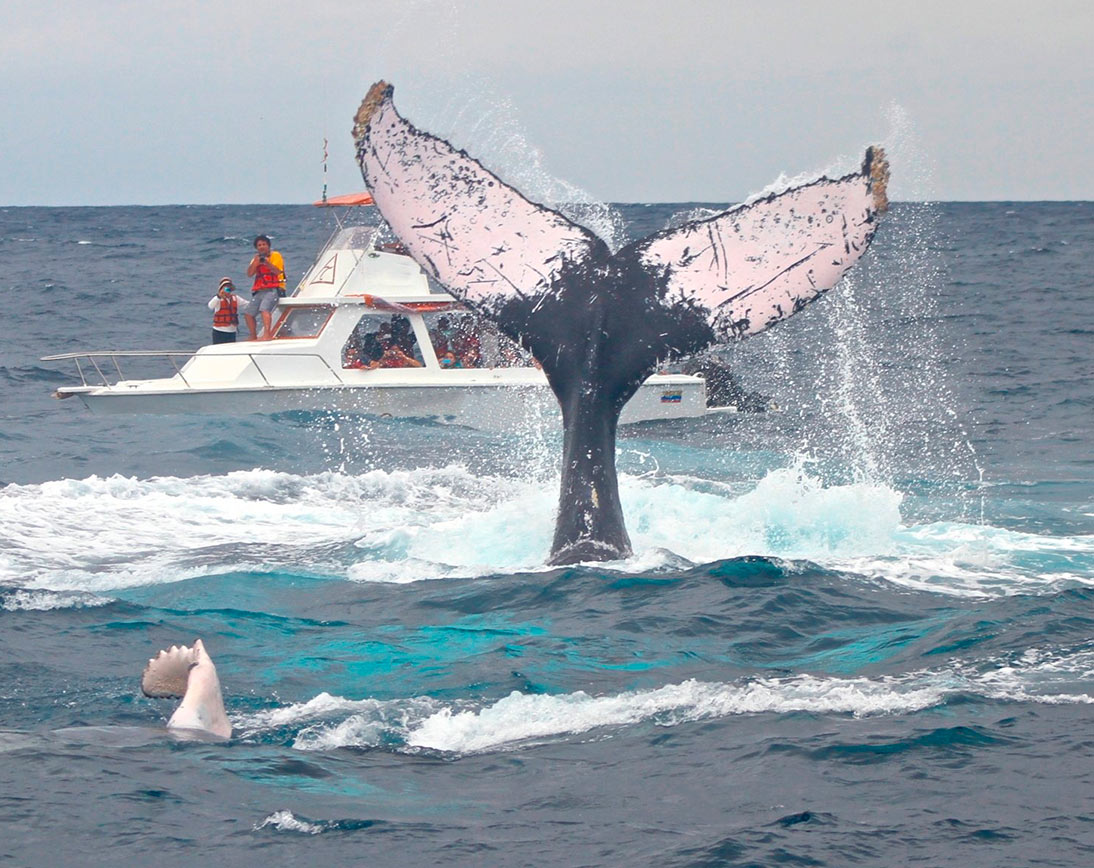
The Role of a Galapagos Yacht Cruise in Whale Watching
Choosing to embark on your adventure via a yacht cruise isn't just about style (though it doesn’t hurt.). There's practicality involved too.
The Yacht Captain and Naturalist Guide's Role in Spotting Whales
With every step you take, your odds of spotting something truly amazing are improving. So keep going and enjoy the journey.
Key Takeaway:
Spotting whales in the Galapagos takes more than just a boat ride; it requires strategic planning. Time your visit for 'whale season' between June and September, when sightings are most frequent. Boost your chances by choosing an itinerary that includes known whale hotspots like Fernandina Island, Isabela's channel, Darwin and Wolf Islands. Make sure to consider taking a well-planned trip with experienced guides who know these areas inside out.
The Role of a Galapagos Yacht Cruise in Whale Watching
A Galapagos yacht cruise plays an integral part in the whale watching experience. The vast expanse of open ocean is made accessible by these sturdy vessels, letting you get closer to the action than ever before.
The Yacht Captain and Naturalist Guide's Role in Spotting Whales
Every great adventure needs its leaders, and on a Galapagos yacht cruise, it’s the captain and naturalist guide who fill this role perfectly. Their combined expertise can significantly enhance your chances of spotting whales during your voyage.
Captains are seasoned mariners with intimate knowledge of local waters. They know where whales like to gather or pass through based on years at sea observing their patterns. It's not uncommon for them to alter course slightly if they spot signs of nearby whale activity—making sure passengers don't miss out on any surprise encounters.
Naturalist guides complement captains' navigational skills with extensive understanding about marine life behavior—a critical factor when looking for elusive creatures like whales (Stat 5: A knowledgeable guide increases sighting chances by up to 60%). These experts constantly scan horizon lines and wave patterns, interpreting subtle clues that might suggest whale presence nearby.
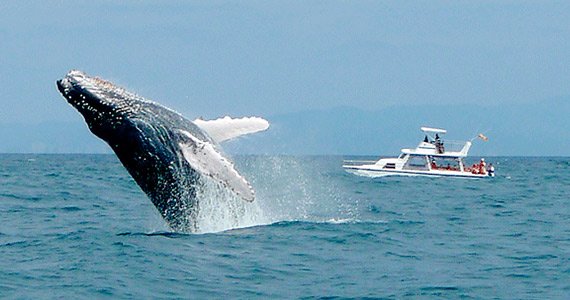
Viewing Whales from the Deck or via Dinghy Ride
Your viewing platform matters when you're trying to spot something as grand as a humpback breaching water surface. There are two main ways you can observe these majestic creatures during a Galapagos yacht cruise: from the deck or onboard dinghy rides (Stat 6: Deck viewings account for 70% of sightings, while dinghy rides make up the remaining 30%).
The deck offers a panoramic view and ample space to relax. Plus, there's nothing quite like sipping on your morning coffee as you watch a pod of dolphins playfully race alongside the yacht or witnessing a blue whale gracefully arch its back before diving deep into azure waters.
For those of you who crave a bit more adventure, dinghy rides are the real deal. These compact boats give you up-close-and-personal encounters with marine life. Just imagine, being only a few feet away from some of the ocean's most captivating creatures.
Key Takeaway:
Jumping on a Galapagos yacht cruise is your golden ticket to see whales in their natural environment. The captain's local sea knowledge, paired with the guide's understanding of marine life behavior, boosts your chances of spotting these awe-inspiring creatures. And guess what? You can choose how you want to experience it all – lounging and watching from the deck or getting up close and personal during exciting dinghy rides.
Best Regions for Whale Activity in Galapagos Marine Reserve
The Galapagos marine reserve is a whale watcher's paradise, offering ample opportunities to observe these majestic creatures. With the vast ocean as their playground, it can sometimes be tricky pinpointing exactly where you're likely to spot them.
Yet, there are certain regions within this diverse archipelago that serve as hotspots for whale activity. Let's explore some of these areas and why they've become such magnets for our finned friends.
The Channel Between Isabela and Fernandina Islands
Situated between two of the largest islands in the Galapagos, Isabela and Fernandina, lies a channel bustling with marine life. The nutrient-rich waters here make it an attractive feeding ground not just for whales but also other sea animals like dolphins and sharks.
Bolivar Channel has earned its reputation among travelers as one of the best places to see whales on any given day during your voyage through the enchanting world of Galapagos.
If lady luck is by your side while sailing across this narrow strait aboard a luxury yacht cruise from Voyagers Travel Company, you might get to witness humpback whales breaching or killer whales surfacing before your very eyes.

Punta Vicente Roca: Northern Coast of Isabela Island
Moving along towards Punta Vicente Roca located on Isabela island’s northern coast – another area that’s often frequented by whales. This region is known for its colder waters due to the Cromwell Current, which brings an upwelling of nutrient-rich water from the ocean's depths.
This not only attracts a plethora of marine life but also serves as a buffet for different species of whales such as minke and humpback who are drawn here in search of food.
Darwin and Wolf Islands
Lastly, we cannot leave out Darwin and Wolf islands. These remote corners situated in the far northwest corner of Galapagos archipelago serve as perfect observation points for whales.
Key Takeaway:
The Galapagos marine reserve, particularly the channel between Isabela and Fernandina Islands, Punta Vicente Roca on Isabela's northern coast, and Darwin and Wolf islands are hotspots for whale activity. These areas' nutrient-rich waters draw a variety of sea life, making them ideal for unforgettable whale sightings.
The Allure of Darwin and Wolf Islands for Whale Watching
Far in the northwest corner of the Galapagos archipelago, two tiny islands cast a giant shadow over any discussion about whale watching. Their names? Darwin and Wolf.
Situated 160km from their nearest neighbour, these remote islands are not on every cruise itinerary due to their distance, they are only on the route of dive liveaboard cruises as they have no land visitor sites, but boast the best marine visitor and diving sites in the archipelago. But trust us when we say this: it's worth making the journey.
Nutrient-Rich Waters Attracting Diverse Marine Life
The secret behind Darwin and Wolf’s allure is surprisingly simple - cold water. The Humboldt Current sweeps up from Antarctica, carrying with it an abundance of nutrients that feed a veritable smorgasbord of marine life.
This cold current meets warmer waters around these far-flung islands causing nutrient-rich upwellings which attract plankton—the buffet table for many sea creatures including whales.
Diving into more detail (pun intended), you'll find several species frequenting this aquatic paradise throughout different seasons. From June to November, Humpback Whales use these fertile feeding grounds as pit stops during migration periods between warm breeding zones near Ecuador's coast and chilly Antarctic feeding areas. Meanwhile, Sperm Whales—a year-round resident—love munching on squid found aplenty here.
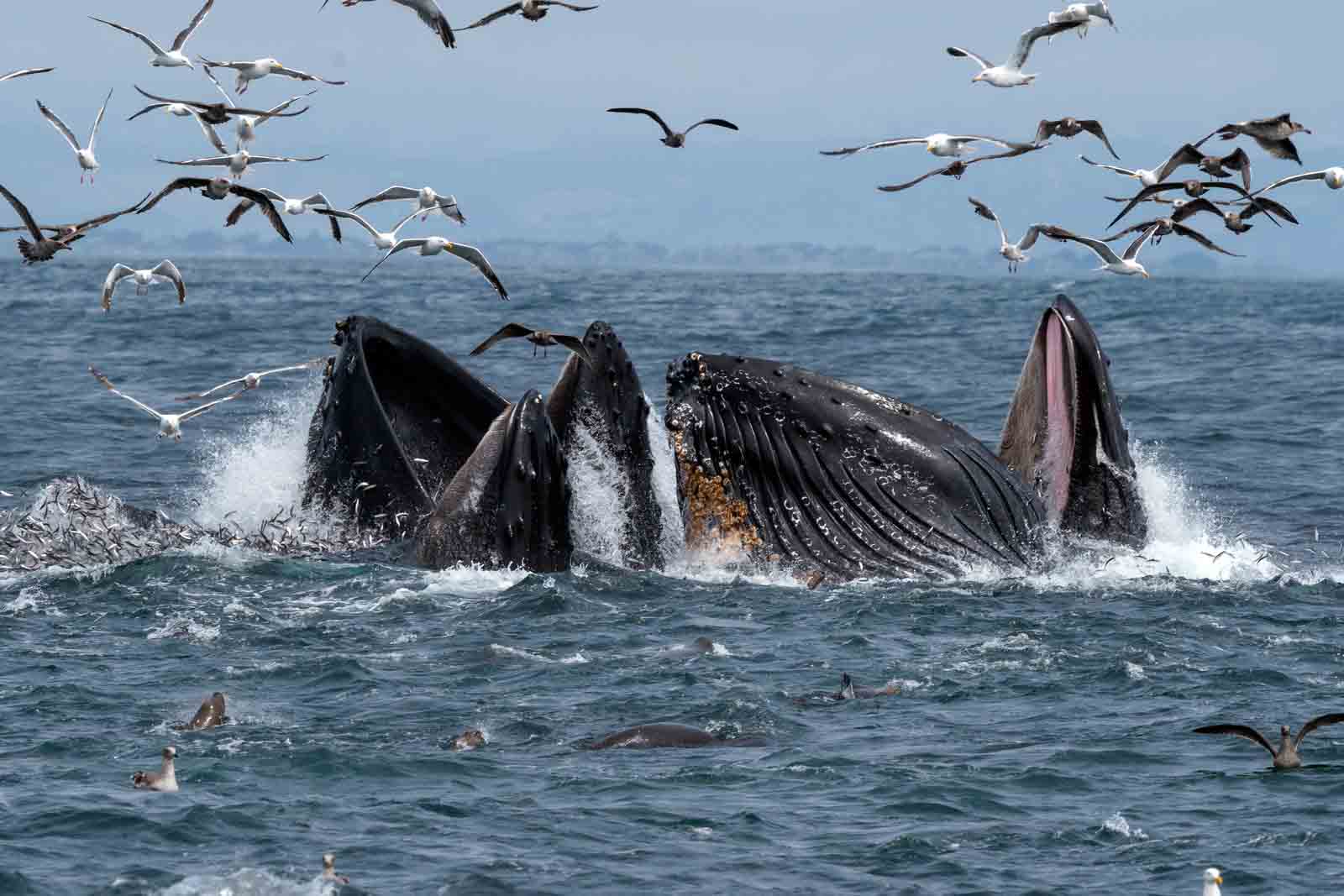
Mind-blowing Marine Diversity
Whales are not the only marine giants attracted to Darwin and Wolf's nutrient-rich waters. Whale Sharks—the world’s largest fish—also frequent these islands from June through November, making them a mecca for divers.
See for yourself. A study published in Nature Ecology & Evolution, showed that these two small islands support the highest abundance of reef fishes including large predators such as sharks.
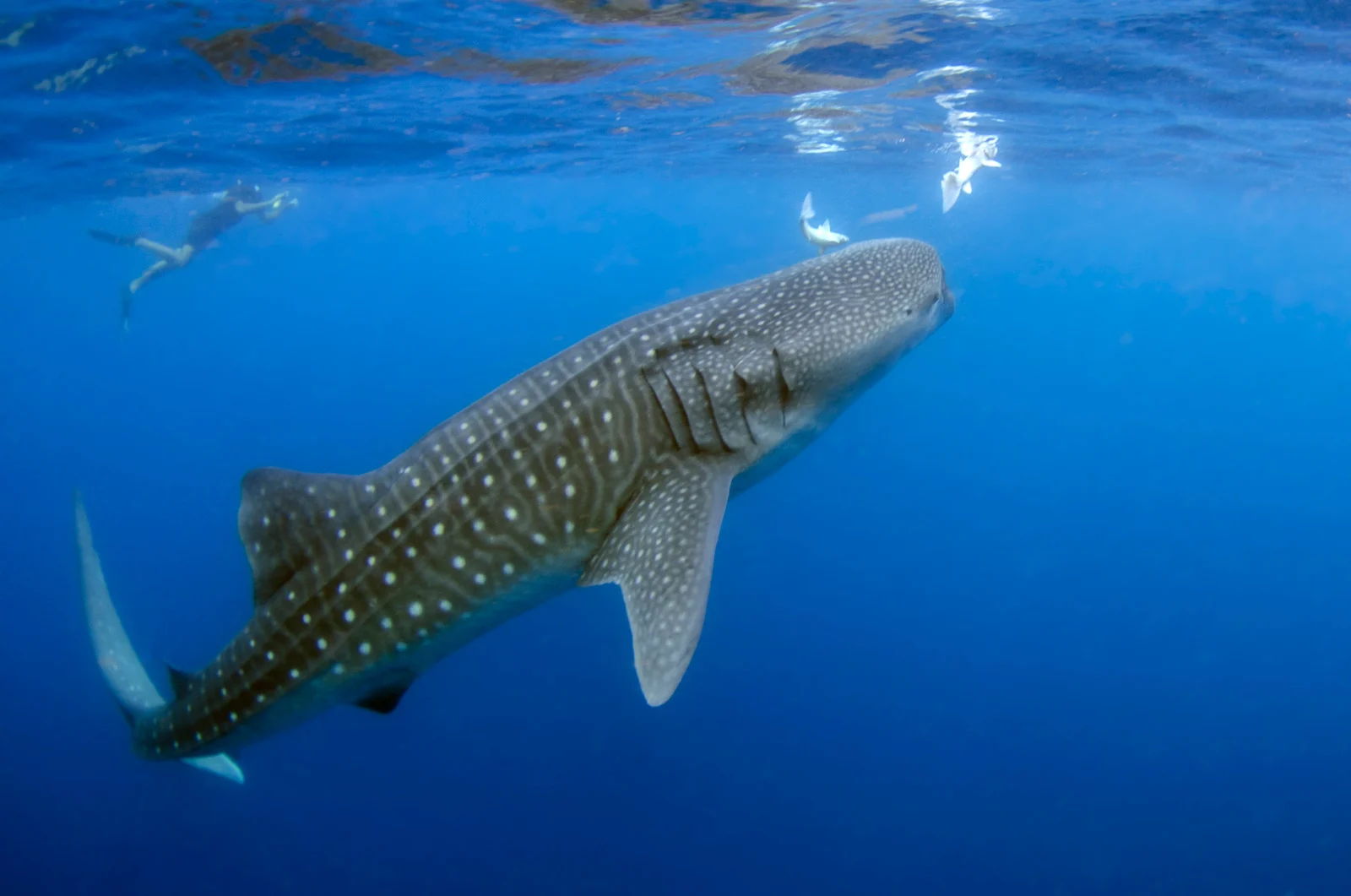
The 'Oh Wow' Moments on Land Too.
We didn't have much to start with, just an initial thought. Yet, that was enough.
Key Takeaway:
Not all. The islands also host a variety of other sea creatures, including the majestic Manta Rays and playful Sea Lions. Whether you're an avid diver or just love wildlife, Darwin and Wolf Islands are must-visit destinations for any nature enthusiast.
Specialist Scuba Diving Cruise to Darwin and Wolf Islands
The Galapagos islands, particularly the far-flung Darwin and Wolf islands, are an under-the-radar paradise for scuba diving enthusiasts. They offer a unique opportunity to dive alongside some of the most fascinating marine creatures.
Nutrient-Rich Waters Attracting Diverse Marine Life
Darwin and Wolf islands have colder waters compared to other parts of the Galapagos archipelago. These nutrient-rich waters make it a thriving hotspot for diverse marine life - including whales.
A study from Frontiers in Marine Science reported that these two remote outposts support more sharks per area than any other place on Earth. That's not just exciting news for shark lovers but also whale watchers because where there's plenty of food (like fish).
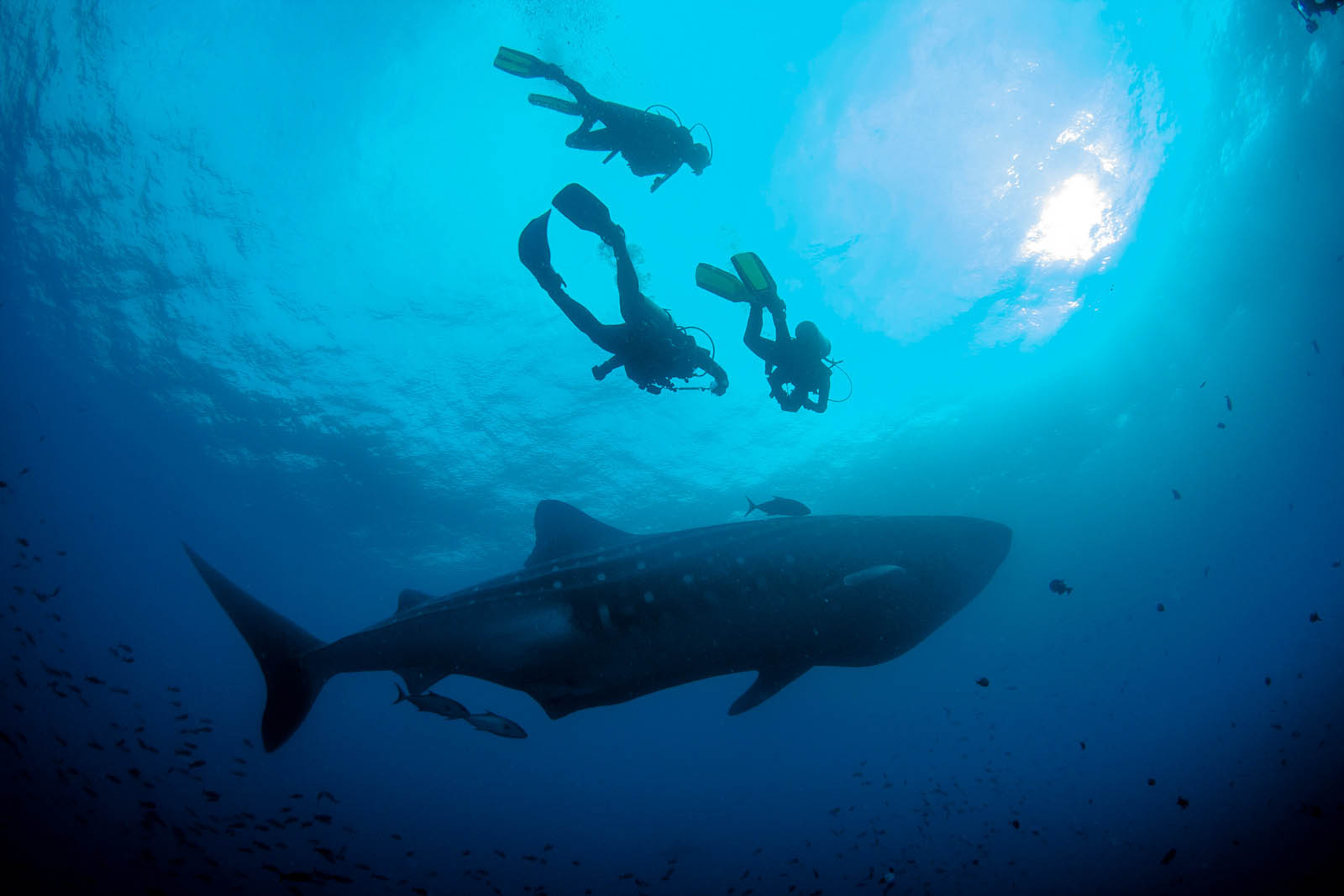
The Specialist Scuba Experience: Dive into A World Less Explored
A specialist scuba diving cruise is unlike your typical snorkeling or beach holiday trip—it’s adventurous, challenging, and absolutely thrilling. It offers divers exclusive access to unspoiled underwater ecosystems teeming with vibrant marine biodiversity.
Darwin Foundation DataZone Checklists suggests around 30 species of sharks alone inhabit this region along with manta rays, dolphins, sea lions among others – all living harmoniously beneath the ocean surface.
If we get lucky enough while exploring deep below water surface during our expedition, we might just catch a glimpse of whales that visit the region for feeding and breeding.
This type of trip is not for the novice when it comes to scuba diving - experienced PADI-certified instructors are available on many cruises to help guide you, but this should not be your first dive. All liveaboard cruises offer PADI-certified dive masters who can guide you through this diving playground.
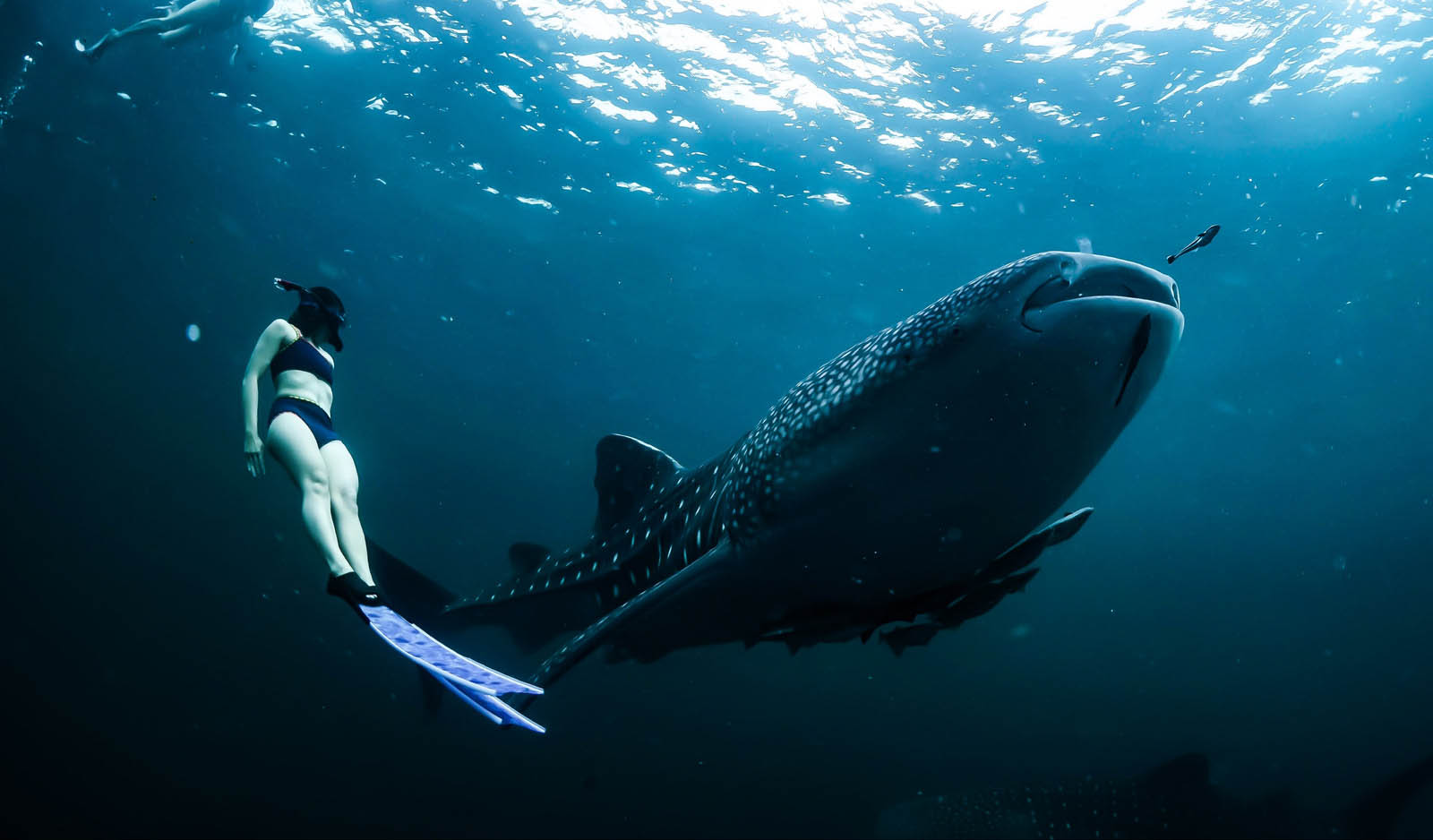
Diving Deep into Whale Territory
Species of marine life. Sharks, turtles, and manta rays all make their homes in these vibrant underwater ecosystems. Divers from around the world flock to this unique location for its unmatched biodiversity.
Key Takeaway:
If you're new to this, take time to put at least 20 dives in your record before visiting the Galapagos. PADI-certified dive masters are there to guide you. So come and immerse yourself in an underwater paradise filled with whales, sharks, manta rays and so much more at Darwin and Wolf islands in the Galapagos.
FAQs in Relation to Galapagos Whale Watching Tips
What is the etiquette for whale watching?
Respect marine life by maintaining a safe distance. Don't feed or touch whales, and keep noise levels down to avoid startling them.
What are the odds of seeing a whale on a whale watch?
Odds vary depending on location, season, and weather conditions. However, skilled guides can significantly increase your chances of sightings.
How do you prepare for whale watching?
Dress warmly in layers with waterproof clothing. Bring binoculars for better viewing, sunscreen to protect against UV rays, and seasickness medicine if needed.
What time of day is best to go whale watching?
Morning trips usually offer calmer sea conditions which may enhance visibility, but whales can be spotted at any time during daylight hours.
Conclusion
Galapagos whale watching can be unpredictable, but with the right knowledge and planning, it becomes an adventure of a lifetime.
The importance of timing your visit during the whale season cannot be overstated. It's not just about getting there; it's about being there at the right time.
Picking an itinerary known for its whale activity is also key. Don't miss the opportunity to experience a once-in-a-lifetime moment by being in the wrong place!
Darwin and Wolf Islands are must-visit spots for divers due to their nutrient-rich waters attracting diverse marine life. That's why these islands have become synonymous with incredible wildlife encounters. For non divers Fernandina and the west side of Isabela have the best odds.
In short, Galapagos whale watching tips aren't just guidelines - they're keys unlocking extraordinary experiences! Use them wisely and unlock your own unforgettable journey into nature’s wild theatre.
-
Related article: Best 4 Places to See Whales in Ecuador
Check Our Suggested Tours:
- 5 Day Galapagos Cruise: Your Ultimate Guide to Adventure and Wildlife
- Itinerary F Endemic Cruise
- Galapagos Luxury Cruise: Unforgettable Adventures in Ultimate Comfort
- Galapagos Isles Eastern Voyage 8-Day Relais Chateaux Luxury Cruise
- Explore the Galapagos Islands Like Never Before
- 8 days – Western Islands
Check Our Galapagos Cruises:



